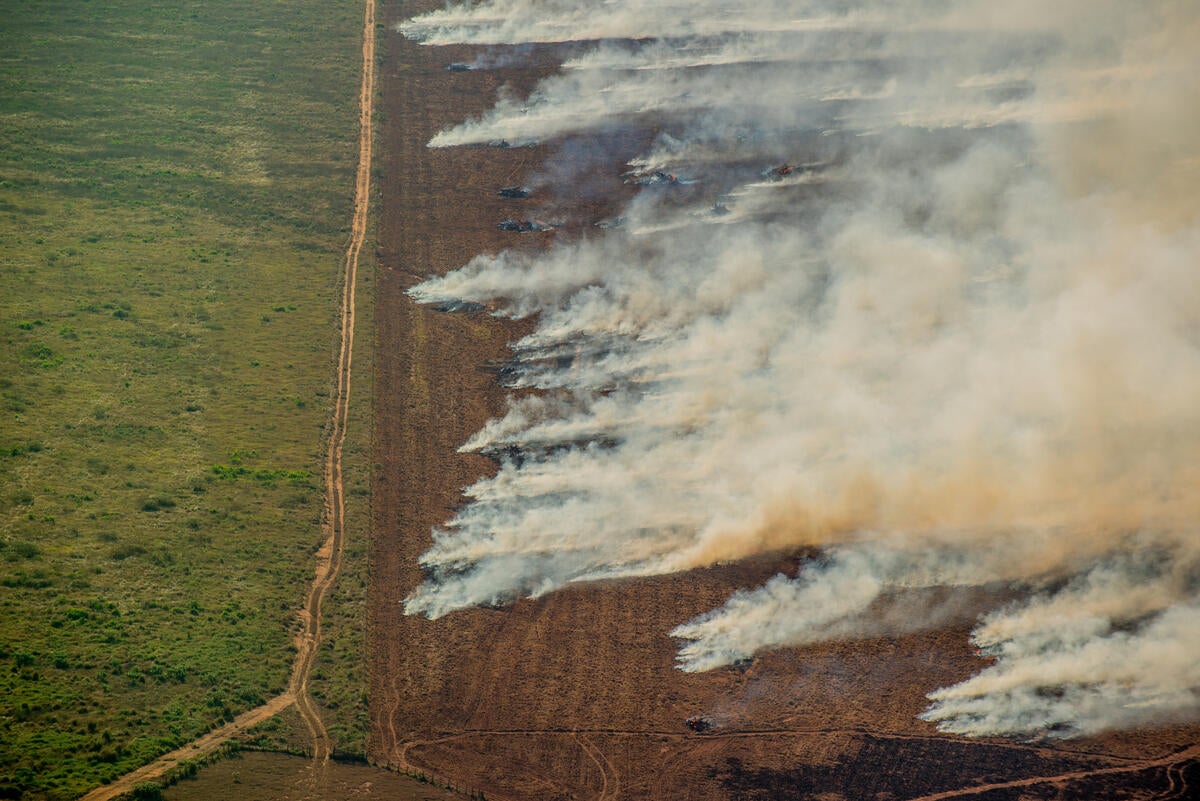Amazon photos show ‘illegal’ burning of rainforest amid record deforestation levels
Greenpeace blames huge surge in deforestation on Brazilian government’s ‘anti-environmental agenda’
Greenpeace activists in Brazil have captured shocking images of fires burning in the Amazon rainforest.
There is currently a government ban on fires in states including Mato Grosso — a large state in western central Brazil — where the photographs were taken between 7 and 10 July.
Despite the ban, there are 4,437 hotspots in Mato Grosso and the state has had the highest number of fires this year — representing almost half (49.5 per cent) of all the fires in the Brazilian Amazon in 2020.
Greenpeace said the “illegal” destruction has been needlessly exacerbated by right-wing president Jair Bolsonaro’s “anti-environmental agenda”.
“These images, along with the record deforestation rates this year, are the intended outcome of Bolsonaro’s long term strategy for the Amazon,” claimed Romulo Batista, Greenpeace Brazil Amazon campaigner.
“His government has been dismantling environmental protection laws and kneecapping the power of the environmental protection agencies since Bolsonaro took office, going as far as using the Covid-19 pandemic as a smokescreen to further enable deforestation, logging and mining in the Amazon.”
He added: “This administration is doing nothing but putting the climate and more lives at risk, especially those of indigenous peoples.”
Fires in the Brazilian Amazon increased by 20 per cent in June, reaching a 13-year-high for the month according to government data, and scientists have warned the region is on track for a repeat of last year’s devastating blazes.

Meanwhile health experts also fear smoke from fires during the dry season is worsening respiratory problems due to air pollution and complicating tackling vast numbers of coronavirus cases. More than 76,000 people have died of Covid-19 in Brazil and the country has seen more than 2 million cases overall.
In June, Brazil’s government space research agency, INPE, detected 2,248 fires in the Amazon rainforest, up from 1,880 in June 2019.
Greenpeace said large fires in the Amazon rainforest “do not occur naturally, but are deliberately set by farmers or land grabbers to expand the land used for cattle ranching and industrial agriculture production”.
Mr Bolsonaro has been criticised for dismantling forest protections that had helped a record reduction in deforestation between 2004 and 2012. Deforestation in the Amazon has soared in recent years, reaching an 11-year high in 2019.
Indigenous peoples, already dealing with the risks of Covid-19, are believed to be at considerably higher risk due to the fires, which, as they intensify, mean greater quantities of air pollution are affecting the region.
Mr Bolsonaro’s response to the fires “has been performative and ineffective”, Greenpeace said and cited moves such as deploying the army in costly and unsuccessful operations to fight deforestation, as well as the announcement of his “insufficient” 120-day-long “fires moratorium”.
Mr Batista said: “As Bolsonaro’s 2019 fire moratorium already showed, banning fires alone doesn’t work. Protecting the capacity to monitor and stop environmental destruction and to enforce the law — which Bolsonaro continues to systematically dismantle — is essential. Those calling for action of the Brazilian government cannot fool themselves and think that Bolsonaro’s sloppy PR moves will have any meaningful impacts.”

International demand for goods including soy, timber, paper, beef and leather are among the key drivers of land clearances in the Amazon.
Last week, data from the WWF and the RSPB revealed the extent of the UK’s demand for goods linked to the destruction.
Brazil represents 13.9 per cent of the total UK overseas land footprint, meaning we currently rely on an average of more than 800,000 hectares of land — much of which was once rainforest — to supply our demand for agricultural products. This is equivalent to five times the size of Greater London.
Join our commenting forum
Join thought-provoking conversations, follow other Independent readers and see their replies
Comments
Bookmark popover
Removed from bookmarks